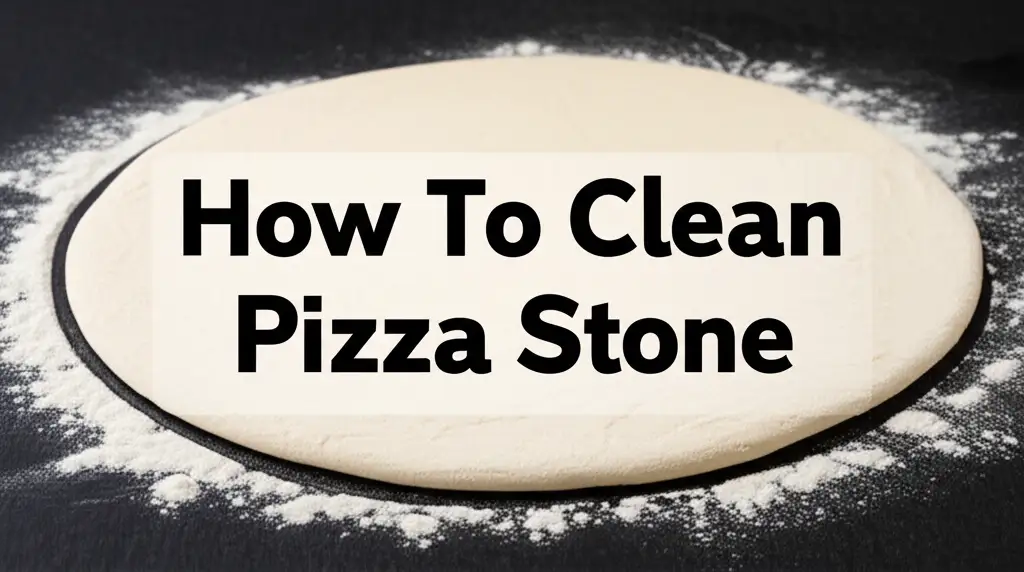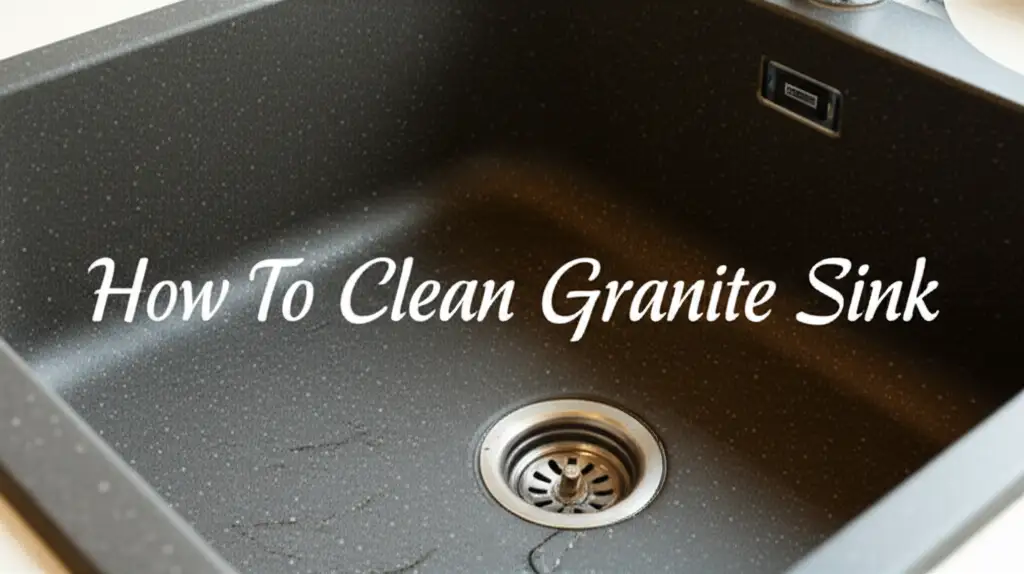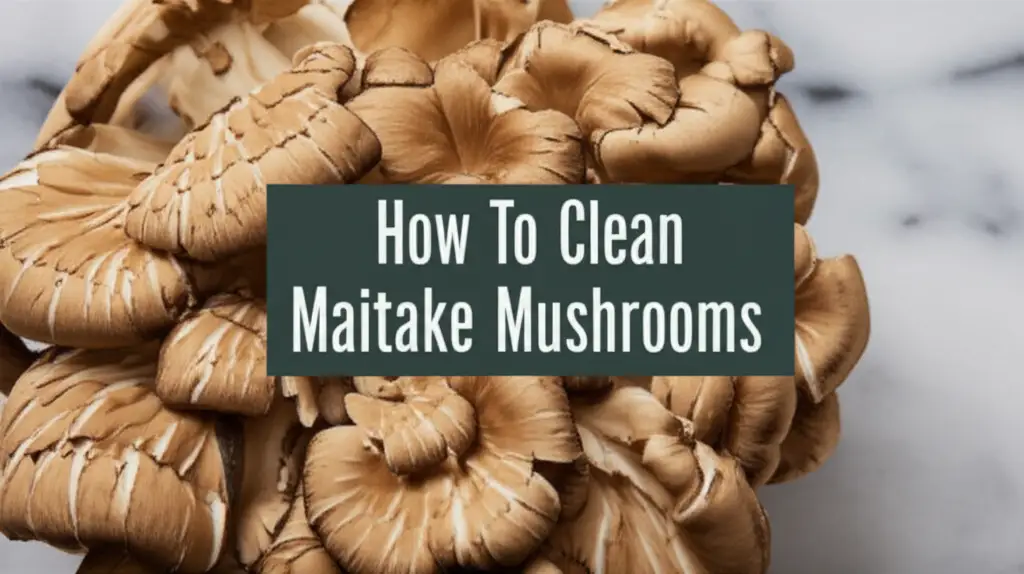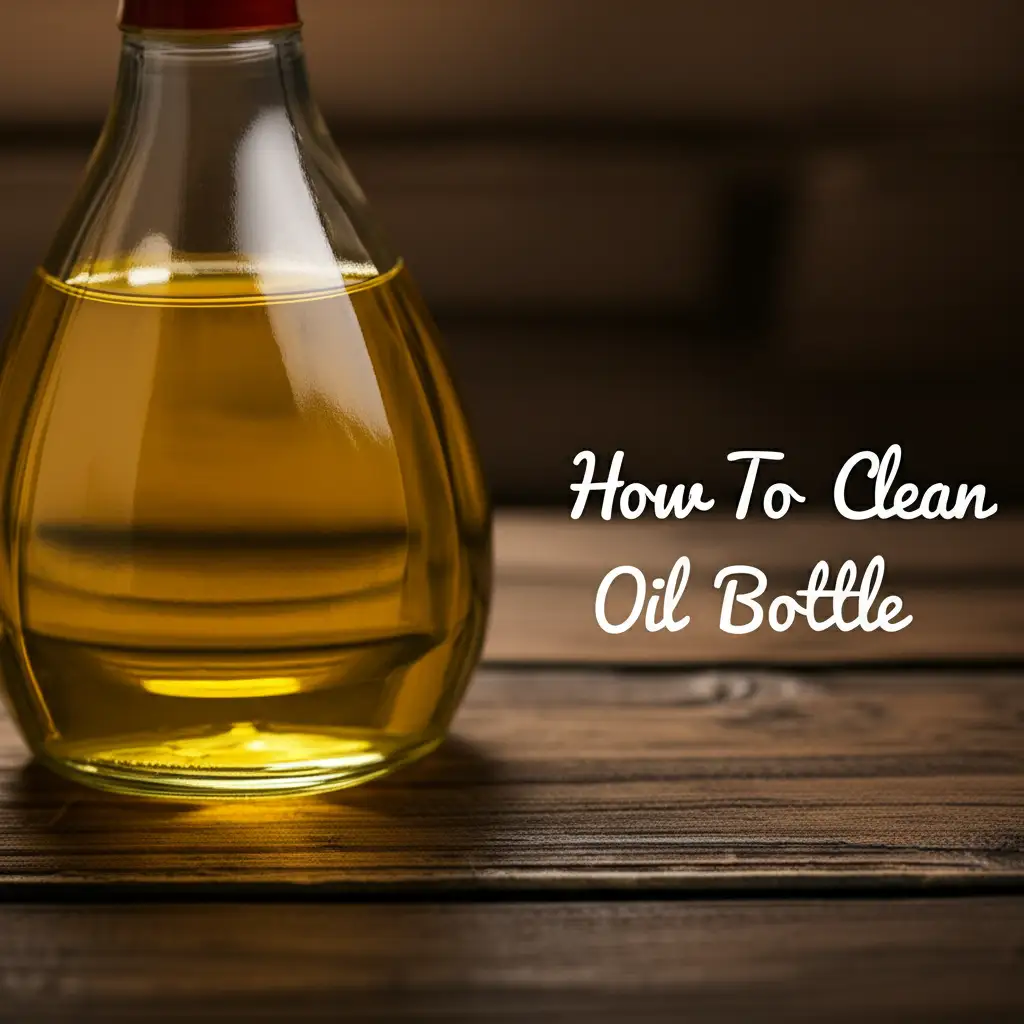· Kitchen Cleaning · 17 min read
How To Clean Ooni Stone
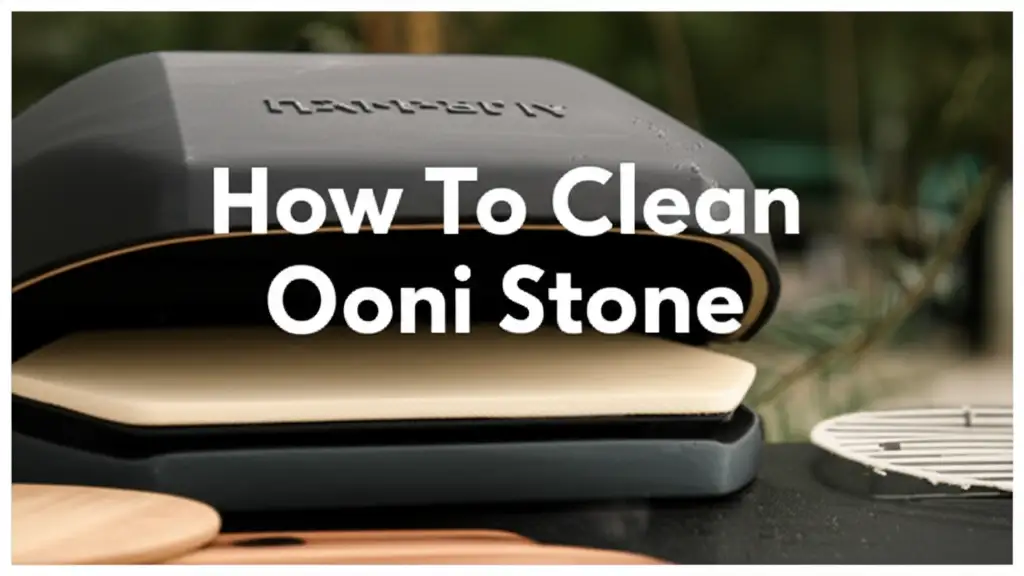
Clean Your Ooni Stone: Simple Steps for Best Pizza
As an Ooni pizza oven owner, you know the joy of making delicious homemade pizzas. The crisp crust and bubbly cheese are truly special. However, after many pizza-making sessions, your Ooni stone can get dirty. Burnt flour, cheese, and toppings stick to the surface. A clean Ooni stone cooks pizza better. It also lasts longer. Keeping your Ooni stone clean ensures consistent cooking results. It also helps with the stone’s long-term durability.
This guide helps you understand how to clean Ooni stone. We will look at why cleaning matters. We will cover the best tools and methods. You will learn easy steps to keep your stone pristine. I will share tips for daily care and removing tough stains. You will also learn common mistakes to avoid. By the end, you will feel confident cleaning your Ooni stone. This helps you keep making perfect pizzas for years.
Takeaway
Keeping your Ooni stone clean is simple. Use high heat to burn off food. Scrape off remaining residue. Never use soap or harsh chemicals. Flip the stone regularly to keep it even.
How to Clean Ooni Stone: Concise Answer
To clean your Ooni stone, run your oven at its highest temperature for 20-30 minutes after cooking. This burns away most food residue. Once cooled, use a stiff brush or scraper to remove any remaining carbonized bits. Never use water or soap, as the stone is porous and will absorb liquids, leading to cracking.
Understanding Your Ooni Stone: Material and Care
Your Ooni pizza oven stone is a key part of your cooking experience. Most Ooni stones are made from cordierite. Cordierite is a type of ceramic. It handles very high temperatures well. This material also absorbs moisture. This absorption helps create a crispy pizza crust. The porous nature of cordierite means you must clean it in specific ways. You cannot treat it like a metal pan.
The stone gets seasoned over time. This means it changes color. It will turn darker in areas. This is normal and shows a good cooking surface. It is not dirt. Cleaning focuses on removing actual food debris. It does not aim to make the stone look brand new. A well-maintained stone cooks food evenly. It also transfers heat well. Proper care extends the life of your pizza stone.
What Makes Cordierite Special?
Cordierite is a heat-resistant material. It can withstand temperatures up to 2200°F (1200°C). This makes it ideal for pizza ovens. The material is also good at distributing heat. It prevents hot spots. This ensures your pizza cooks evenly. Its porous nature is important for cooking. It wicks away moisture from the pizza dough. This helps achieve a perfectly crispy bottom crust.
However, this porosity also means the stone can absorb liquids. If it absorbs water or soap, it can crack. This happens during heating. The trapped liquid turns to steam. The steam creates pressure inside the stone. This pressure causes cracks. So, water and soap are strictly off-limits for cleaning. Always remember the stone’s nature when cleaning it.
The Golden Rule of Ooni Stone Cleaning: High Heat Pyrolysis
The best way to clean your Ooni stone uses high heat. This method is called pyrolysis. It is the most effective and safest way. When you run your Ooni oven at its highest temperature, any food residue on the stone burns away. Organic materials like cheese, dough, and sauce turn into ash. This process is simple and requires little effort. It also avoids harmful chemicals.
After cooking your pizzas, turn the oven up. Let it run for another 20 to 30 minutes. The extreme heat does the work for you. You will see smoke as the food bits incinerate. This is a sign the process is working. Once the oven cools, most of the tough messes are gone. This method is similar to a self-cleaning oven cycle. It uses intense heat to remove baked-on grime. For more general advice on self-cleaning methods, you can learn about how to clean oven after self-clean.
Steps for Heat Cleaning
This method is straightforward. I use it every time I finish cooking. It keeps my stone ready for the next pizza night.
- After Cooking: Finish making your last pizza.
- Increase Heat: Turn your Ooni oven to its maximum temperature setting.
- Burn Off Residue: Let the oven run for 20-30 minutes. You will see smoke from burning food. This is normal.
- Cool Down: Turn off the oven. Let the stone cool completely inside the oven. Do not touch it when it is hot. A fully cooled stone is safe to handle.
This pyrolysis process is powerful. It breaks down even stubborn, carbonized food. It leaves mostly ash. This ash is easy to remove. This heat cleaning avoids the need for scraping. It also prevents using any liquids. This keeps your Ooni stone in good condition. It also saves you effort.
Tools and Techniques for Scraping and Brushing
After the high-heat cleaning, some ash or small burnt bits might remain. This is where physical tools come in handy. You need specific tools for this job. They help remove debris without damaging the stone. Always ensure the stone is completely cool before you touch it. A hot stone can cause severe burns. Safety is important when handling oven parts.
A good Ooni stone brush is essential. These brushes have stiff bristles. Some have a scraper blade on the back. The bristles help sweep away loose ash. The scraper helps with any stuck-on carbon. Never use metal spatulas or sharp objects. These can scratch or gouge the stone surface. Scratches can trap food. They can also weaken the stone.
Recommended Tools and How to Use Them
I always keep these tools near my Ooni. They make cleaning quick and easy after the heat process.
- Ooni Stone Brush: This is the primary tool. It has strong bristles. Some brushes have a stainless steel scraper.
- How to Use: Once the stone is cool, use the brush to sweep away ash. If there are stuck bits, use the scraper edge. Push gently. Do not press hard.
- Plastic Scraper: A sturdy plastic scraper can also work. It is less likely to damage the stone than metal.
- How to Use: Use the edge to carefully lift any remaining burnt-on bits. Angle the scraper slightly. Work slowly.
- Vacuum Cleaner (Handheld with Hose): For very fine ash.
- How to Use: After brushing, a small vacuum can pick up fine dust. Make sure the stone is completely dry. Do not use a wet vacuum.
Remember, the goal is to remove loose debris. You are not scrubbing the stone. Gentle scraping and brushing work best. You can also clean baking stones with similar methods. For example, knowing how to clean Pampered Chef stone involves similar principles of dry cleaning and scraping.
Dealing with Stubborn Stains and Burnt-On Residue
Even with high-heat cleaning and scraping, some marks may remain. These are often dark, carbonized patches. They are usually burnt-on bits of cheese or sauce. Do not worry about these. They are part of the stone’s seasoning. They typically do not affect performance. The key is to address actual residue, not cosmetic discoloration. Removing stubborn residue requires patience. It also requires understanding the stone’s limits.
It is important not to use harsh methods. Avoid chemicals, soap, or abrasive cleaners. These will absorb into the porous stone. They can cause bad odors when heated. They can also ruin the taste of your pizza. Worse, they can cause the stone to crack. Focus on dry methods. Repeated use of the heat cleaning method is often the best solution for tough spots.
Advanced Dry Cleaning for Stubborn Marks
If you have a particularly stubborn spot, try these steps.
- Repeat Heat Cleaning: Run your Ooni oven at max heat again for an extended period. Sometimes 45-60 minutes helps. The longer exposure to extreme heat can break down very tough carbon.
- Scrape with Care: After the stone cools completely, use your Ooni brush or plastic scraper. Focus on the stubborn spot. Apply steady, light pressure. Work in small areas. Do not force anything.
- Flip the Stone: Ooni stones are reversible. This is a great feature. If one side has heavy carbon buildup, flip it. The next time you cook, the dirty side faces down. The intense heat from the burner will work on the underside. It will pyrolyze the residue. This often cleans the bottom surface naturally over several uses. Flipping also helps distribute heat evenly to both sides of the stone. This prevents warping.
Remember, a perfectly clean-looking stone is not the goal. A functional, residue-free stone is. Dark spots are normal. They are a sign of a well-used pizza stone. Cleaning surfaces with burnt-on residue can be challenging for various items, so understanding how to tackle general burnt remnants, like how to clean bottom of oven, can provide broader insights into similar issues.
Common Mistakes to Avoid When Cleaning Your Ooni Stone
Cleaning your Ooni stone is simple, but it is easy to make mistakes. These mistakes can damage your stone. They can also affect your pizza’s taste. Knowing what not to do is as important as knowing what to do. I have seen many people ruin their stones by using the wrong methods. This section helps you avoid those common pitfalls.
The most critical mistake is using water or soap. Ooni stones are porous. They absorb liquids. When you heat a wet stone, the water turns to steam. This steam creates pressure inside the stone. This pressure causes the stone to crack. Soap will soak into the stone. It will then burn off when you cook. This leaves a chemical taste on your pizza. It can also produce unpleasant fumes. Always stick to dry cleaning methods.
Pitfalls to Steer Clear Of
Here are the top mistakes you must avoid for stone longevity and performance:
- Using Water or Soap: This is the biggest no-no. Do not rinse your stone under the faucet. Do not use dish soap. Do not put it in the dishwasher. Dishwashers use water and detergents. Both are bad for your Ooni stone.
- Using Harsh Chemicals or Cleaners: Bleach, oven cleaner, or abrasive powders are dangerous. They will soak into the stone. They will emit toxic fumes when heated. They will also ruin your stone and potentially your health.
- Cleaning a Hot Stone: Never attempt to scrape or brush a stone while it is still hot. You risk severe burns. The stone is also more fragile when hot. Let it cool completely.
- Using Metal Utensils or Wire Brushes: Metal spatulas, knives, or wire brushes can scratch the stone. Scratches create rough spots. Food can stick more easily to these areas. They can also weaken the stone over time. Stick to approved Ooni brushes or plastic scrapers.
- Over-Scraping: You do not need to scrape until the stone is perfectly white. Some discoloration is normal. It is seasoning. Over-scraping can remove the stone’s surface. This can make it less effective. Focus on removing loose debris and carbonized food.
- Not Flipping the Stone: Forgetting to flip your stone can lead to uneven wear. One side might get more burnt residue. Flipping it regularly helps maintain an even cooking surface. It also lets the oven’s heat clean the underside.
By avoiding these mistakes, you will keep your Ooni stone safe and functional. It helps to follow simple rules. It extends the life of your Ooni stone. This means more perfect pizzas for you.
Long-Term Care and Maintenance for Your Ooni Stone
Proper maintenance goes beyond just cleaning after a cook. It involves consistent habits. These habits ensure your Ooni stone performs well for years. Think of it as caring for a prized kitchen tool. Your pizza stone is an investment. Good care prevents problems. It also delays the need for replacement. I find that a few simple steps make a big difference.
The main aspect of long-term care is consistency. Regular high-heat cleaning is key. It prevents excessive build-up. Always cool the stone completely before handling it. Store it properly to avoid damage. Do not drop or bang the stone. Cordierite is durable, but it can chip or crack if mishandled. Keep these practices in mind. They make your Ooni stone a reliable part of your pizza-making journey.
Tips for Extending Your Stone’s Life
Here are my top tips for ongoing care of your Ooni stone:
- Pre-Heat Properly: Always pre-heat your Ooni oven thoroughly. This means letting it reach full temperature. The stone needs time to heat evenly. A cold stone can crack if hit with sudden high heat. It also cooks pizza poorly.
- Rotate and Flip Regularly: As mentioned, flipping your stone between cooks is beneficial. It exposes the bottom to direct heat. This helps burn off any accumulated residue on that side. It also ensures even seasoning and wear on both surfaces. I usually flip mine every 3-4 uses.
- Avoid Extreme Temperature Changes: Do not place a frozen pizza directly on a super hot stone. Let frozen foods come to room temperature first. Sudden cold can shock the hot stone. This can cause it to crack. Similarly, do not cool a hot stone with water. Let it cool naturally in the oven.
- Store Safely: When not in use, keep your Ooni stone in a safe place. If you move your oven, remove the stone. Store it in its original box or a padded bag. Prevent it from being dropped or having heavy objects placed on it. Chips or cracks can spread over time.
- Check for Cracks: Periodically inspect your stone. Look for hairline cracks. Small cracks can grow with repeated heating and cooling. A badly cracked stone needs replacement. It will not cook pizzas evenly. It can also break apart during use.
- Brush Before Each Use (Optional): Some people like to give the stone a quick brush before pre-heating. This removes any dust or fine ash. This is a quick step. It ensures a clean surface for your pizza.
By following these simple maintenance steps, your Ooni stone will serve you well. It will make many delicious pizzas. Regular care makes a big difference in performance and lifespan.
When to Consider Replacing Your Ooni Stone
Even with the best care, your Ooni stone will not last forever. Like any cooking surface, it experiences wear and tear. Over time, heat cycles and minor impacts can take a toll. Knowing when to replace your Ooni stone is important. A damaged stone affects your pizza quality. It can also pose a safety risk. Do not wait until it completely breaks.
Most Ooni stones can last for several years. This depends on how often you use your oven. It also depends on how well you care for the stone. Regular cleaning and careful handling extend its life. However, certain signs tell you it is time for a new one. Replacing the stone ensures you continue to make amazing pizzas. It also keeps your Ooni oven working at its best.
Signs It’s Time for a New Stone
Here are the key indicators that your Ooni stone might need replacing:
- Major Cracks: Hairline cracks are common and usually harmless. However, large, deep cracks are a problem. These cracks can extend across the stone. They make the stone unstable. The stone might break during cooking. This is a safety concern. Replace a stone with significant cracks immediately.
- Stone Breaking into Pieces: If your stone has already split into two or more pieces, it is definitely time for a new one. It cannot hold heat or support a pizza properly.
- Severe Warping: Sometimes, stones can warp slightly over time. If the warping is severe, the stone will not sit flat. This creates uneven cooking. Your pizzas will have parts that burn and parts that are undercooked.
- Persistent Sticking: While some sticking is normal, if every pizza consistently sticks despite proper flouring and stone temperature, your stone might be overly worn. Its porous nature might be compromised.
- Pitting or Deterioration: Deep pits or crumbling spots on the stone surface are bad signs. These areas can trap food. They can also affect heat distribution. This causes uneven cooking.
- Unpleasant Odors: If you notice persistent, strange odors coming from your stone even after high-heat cleaning, it could be a sign. It might have absorbed something that cannot be burned off. This is rare if you follow proper cleaning.
- Visible Chips or Missing Sections: Large chips off the edges or corners reduce the cooking surface. They can also make the stone unstable.
Replacing your Ooni stone is an easy process. New stones are readily available from Ooni and other retailers. Investing in a new stone ensures your Ooni oven performs at its peak. This means delicious, perfectly cooked pizzas every time.
Frequently Asked Questions About Cleaning Your Ooni Stone
Can I use soap or water to clean my Ooni stone?
No, you should never use soap or water on your Ooni stone. The stone is made of porous cordierite. It absorbs liquids easily. If it absorbs water or soap, it will crack when heated. Soap will also leave residue that can taint your food and create bad odors. Always use dry cleaning methods.
How often should I clean my Ooni stone?
You should perform a basic clean after every use. This means running the oven at high heat for 20-30 minutes to burn off food. After the stone cools, brush off any ash. A deep clean is usually not necessary. Consistent light cleaning prevents major build-up.
Is it normal for an Ooni stone to be black or discolored?
Yes, it is completely normal for your Ooni stone to change color. It will darken over time, often becoming black or brown in spots. This is called seasoning. It shows a well-used stone. This discoloration does not affect cooking performance. Do not try to make it look brand new.
How do I remove burnt cheese or stubborn food from my Ooni stone?
For burnt cheese or other stubborn food, first use the high-heat method. Run your oven at max temperature for 30-60 minutes. After it cools, use an Ooni stone brush or a plastic scraper. Gently scrape away the carbonized residue. You can also flip the stone for the next cook. The underside will get a high-heat clean from the oven’s burner.
Can I put my Ooni stone in the dishwasher?
No, never put your Ooni stone in the dishwasher. Dishwashers use water, soap, and high temperatures. All of these are harmful to a porous cordierite stone. It will absorb the water and soap. This will lead to cracking and bad tastes when you next use it.
What should I do if my Ooni stone cracks?
If your Ooni stone develops a large crack or breaks into pieces, it is time to replace it. Small hairline cracks might be okay. However, large cracks can cause uneven cooking. They can also make the stone unstable and unsafe. You can purchase replacement stones directly from Ooni or authorized retailers.
Conclusion: Keep Your Ooni Stone Ready for Pizza Perfection
Cleaning your Ooni stone does not have to be a chore. It is a simple part of owning a pizza oven. By following a few key principles, you ensure your stone stays in excellent condition. This helps you make perfect pizzas every time. The most important rule to remember is to use high heat for cleaning. Let the oven do most of the work. Then, gently scrape away any remaining residue.
Always avoid water, soap, and harsh chemicals. These can damage your porous cordierite stone. They can also ruin your pizzas. Instead, rely on the power of heat and a good Ooni stone brush. Flip your stone regularly for even seasoning and cleaning. With consistent care, your Ooni stone will be a reliable part of your pizza-making journey for years. Enjoy many more delicious, crispy pizzas from your well-maintained Ooni oven. Keep these tips in mind. You will always have a clean, ready-to-use stone. Get ready to impress your friends and family with amazing homemade pizzas!
- Ooni stone
- pizza oven cleaning
- stone care
- pizza stone maintenance
- outdoor oven cleaning

